

e-mail :  ( Please write in ' Subject ' entry : ' METAPHYSICS ', in order for me to be able to distinguish your mail from spam )
( Please write in ' Subject ' entry : ' METAPHYSICS ', in order for me to be able to distinguish your mail from spam )
Most expressing example of the type :
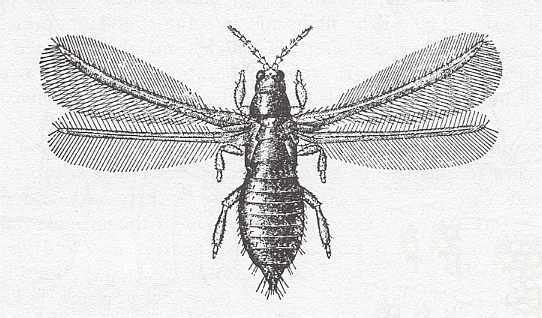
Figure 1 : Taeniothrips inconsequens, Order Thysanoptera. Strongly magnified.
(In Imms' General Textbook of Entomology (RICHARDS and DAVIES), 1977.)
Description of the type
Morphological features
Here we see the most different interrelationships of both pairs of wings. Skeleton and musculature of thoracic segment little investigated, but certainly also differing in connection with one or another development of the wing organs. In the structure of the wings a very strong development of bristles or hairs is very characteristic. The membrane of the wing and its venation very reduced. The wing has changed into a small blade merely serving to sustain the hairs. The latter are distributed along the margins of the wing, especially along the hind margin. The whole wing may be comparable to a bird's feather. Absolute size of the insects very small, usually in the order of 1-3 mm, sometimes even not surpassing part of a millimeter. Relative size of the wings not large, about equal to the body or smaller. The shape of the body doesn't show any aerodynamic adaptations.
Functional features
Flight of these most minute insects not yet investigated, so that evaluating it can only be done indirectly, based on the morphology of the flight-organs. The beats of both pairs of wings, in the case of their homonomous development, may be asynchronous. This is indicated by the absence of a coupling device in certain representatives for instance in thrips (Thysanoptera). In other forms of this type, having two pairs of wings, there are various bristles and hooks, residues of original, ancestral types. Such we find in Lepidoptera : certain moths, and in Hymenoptera : Chalcidoidea (small parasitic wasps), in caddis flies (Trichoptera) : Hydroptilidae. In them synchronicity of fore- and hindwings is very probable. Speed of flight, wing-beat frequency, maneuverability during flight, and values of load, are not known with precision. The chief feature of this type, consisting in the development of hairs or bristles increasing the overall 'surface area' of the wing, determines the nature of their flight. The small or minute size of the representatives of feather-wingedness results in low absolute weight. The viscosity of the air is a sufficient support for the wings in this type, wings possessing hairs. Together with this, moderate development of the skeleton and the muscular apparatus certainly points to a low wing-beat frequency and an insignificant load on the wings. All this allows to suppose flight that is little active, the basic task of it being support of the body. The described structure of the wings forces one to assume the presence of a very special regime of wing-beat, which, however, is not yet investigated, being a future task. The biological significance of flight is great, rendering possible [geographical] distribution, or perhaps, is connected with a sexual function.
Differentiation, connections, and representatives of the type.
The significance of ptilopterygia, considering the evolution of the flight-function, is very great. This type, originated in the most diverse insects in connection with the attainment of small and minute size together with a still existing necessity to be able to fly, clearly illustrates the response of the organism to heavy aerodynamic demands set by the environment to the flight-apparatus of a certain size. The origin of ptilopterygia from various other types, let alone as to the different phylogenetic pathways, results in a wide differentiation of this type.
1. Protoptilopterygia
Traits of feather-wingedness are least expressed in small Lepidoptera, moths of the superfamily Tineoidea and some others, in caddis flies (Trichoptera) of the family Hydroptilidae, in psocids (Psocoptera, booklice and their allies) of the family Lepidopsocidae. In these insects the forewings have a narrowly elliptical shape with a pointed wing tip. The hindwings are even narrower. Long hairs are only to be found along the posterior wing margin. Venation of forewings fairly rich, consisting of many branching veins, not displaying costalization (shift of veins towards the anterior wing margin, or strenghening of the veins in the anterior region of the wing). The evident source of this subtype -- original feather-wingedness or protoptilopterygia -- is neuropterygia, and, perhaps, platypterygia. See Figures.
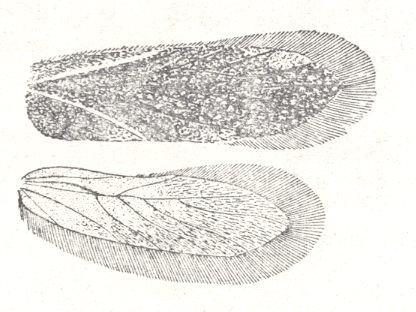
Figure 2 : Perientomum triste Hag. Family Lepidopsocidae, Order Psocoptera. Sri Lanka. Wings. Length 1.5 mm.
(After HENDERLEIN, in RODHENDORF, 1949.)
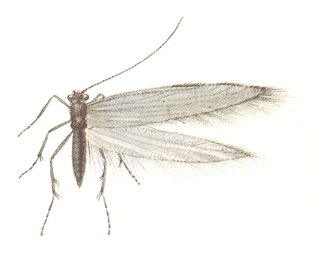
Figure 3 : Hydroptila sparsa Curtis. Family Hydroptilidae, Order Trichoptera (Caddis flies). Length of forewing about 3.2 mm.
(After CHINERY, in Elseviers Insektengids, 1983.)
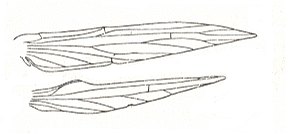
Figure 4 : Wing (venation) of Stactobiella ulmeri Silt. Family Hydroptilidae, Order Trichoptera. Length of body about 2 mm. Hairs, covering the wings, not drawn. Northern Europe. (After MARTYNOV, in RODHENDORF, 1949.)
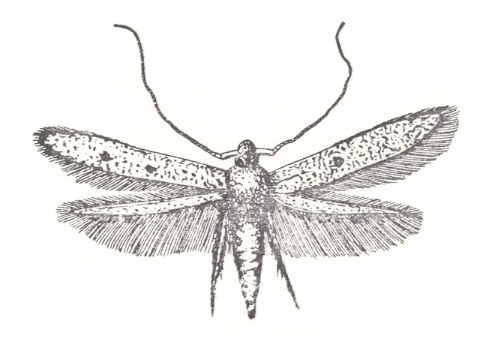
Figure 5 : Parametriotes theae Kusn. Family Coleophoridae, Order Lepidoptera. Caucasus.
(After KUSNETSOV, in RODHENDORF, 1949.)
2. Euptilopterygia
The most expressed condition of ptilopterygia (feather-wingedness) we find in thrips (Order Thysanoptera) (See Figure 1). This subtype -- true feather-wingedness or euptilopterygia -- is characterized by almost homonomous wings, being narrow stretched blades supported by a few simple veins. Along the margins of these wing-blades there are combs of long bristles, being longer at the posterior margin. Source of this subtype, probably, also is neuropterygia, but then from the earlier most simple of that type's forms. See next Figures.
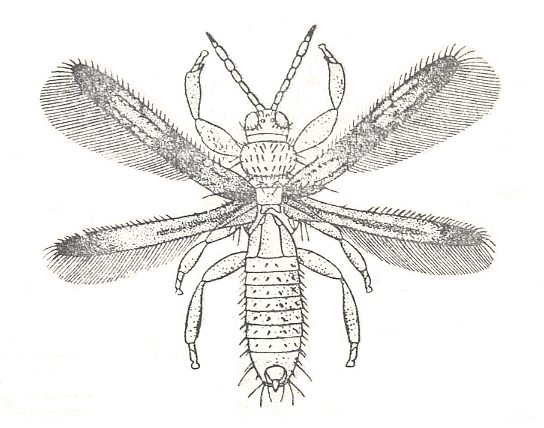
Figure 6 : Melanothrips ficalbii Buffa. Family Aeolothripidae, Order Thysanoptera. Italy. Length of body 0.8 mm.
(After BUFFA, in RODHENDORF, 1949.)
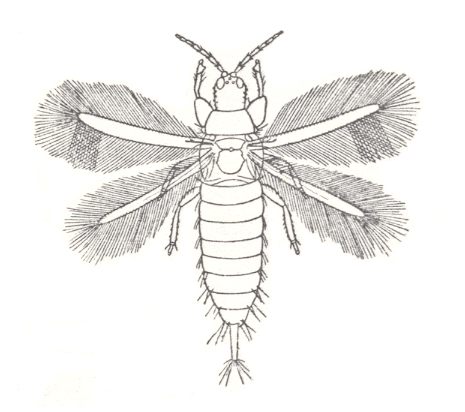
Figure 7 : Phloeothrips coriacea Hal. Family Phloeothripidae, Order Thysanoptera. Europe. Strongly magnified.
(After UZEL, in RODHENDORF, 1949.)
3. Diptilopterygia
Other no less clear forms of feather-wingedness we find in the minute parasitic Hymenoptera from the family Mymaridae (fairy flies) and certain other Chalcidoidea. Usually the wings preserve the heteronomous condition, typical of their ancestral forms which belong to (as to wing type) to dipterygia (two-wingedness). The forewings are longer, with rudimentary but costalized venation. Hindwings narrower and shorter, sometimes completely reduced. Hairs are distributed in the form of very long combs at the distal half of the wing. This subtype of feather-wingedness in the Hymenoptera, or diptilopterygia certainly is a derivative of the dipterygia of ancestral forms [with still four wings), having, in connection with decrease of size, lost active flight. See next figure.
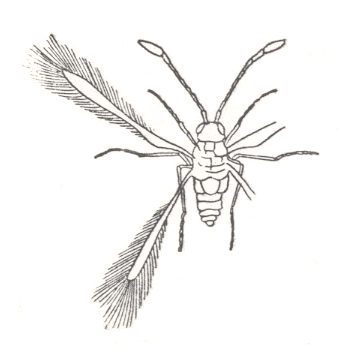
Figure 8 : Alaptus sp. Family Mymaridae, Order Hymenoptera. Length of body approximately 0.5 mm.
(After SHARP, in RODHENDORF, 1949.)
4. Elytroptilopterygia
The very characteristic wings, having the nature of ptilopterygia, are shared by members of a totally different nature, namely as seen in the minute beetles of the family Ptiliidae. These insects, naturally, represent a special subtype, shield-featherwingedness or elytroptilopterygia, characterized by the presence of hindwings only, with a structure proper to the present type. The forewings are firm elytra, as is normal in beetles (Order Coleoptera). The posterior feather-like wings are bent under the elytra. To this subtype do belong the smallest known beetles of which the length of the body sometimes doesn't exceed 0.25 mm. See next Figure.
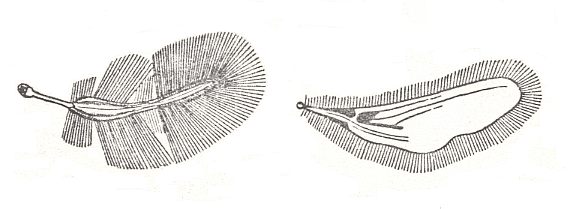
Figure 9 : Wings of feather-winged beetles. Left : Nossidium sp., right : Ptilium sp. Strongly magnified.
(After STURM, in RODHENDORF, 1949.)
5. Pseudoptilopterygia
Finally, into the present type we have to include representatives of (1) certain Hymenoptera, namely the very minute Trichogrammatidae, (2) certain Diptera, namely the gall midges of the family Itonididae (= Cecidomyidae), (3) certain Homoptera, namely the males of scale insects (Coccoidea) and Aleurodoidea (white flies). See figures.
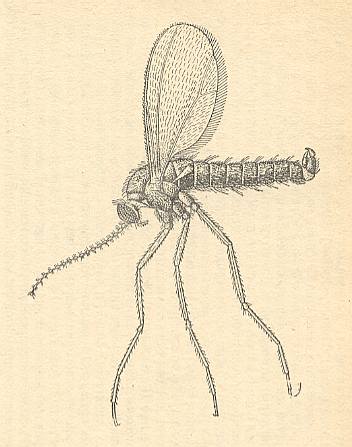
Figure 10 : Mayetiola destructor Say., Male, Family Cecidomyiidae (gall midges), Order Diptera.
(After CURRAN, in RODHENDORF, 1964.)
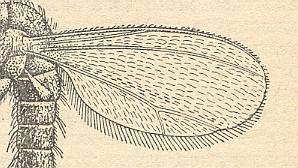
Figure 10a : Detail (wing) of Figure 10.
These insects have an essentially different structure of flight device, i.e. different from all remaining representatives of feather-wingedness. They are connected with the present type by the following features : Size of body minute, more rarely medium (some Coccoidea). Wings almost lacking venation. The difference consists in the presence of rather broad wing-blades (sometimes even two pairs) carrying moderately developed hairs or even lacking them almost totally. Such a type of flight apparatus is fairly peculiar. Perhaps it may be taken as an independent type. Because of the preliminary nature of the present account of this form of flight device, I deem it rational to take it provisionally as a subtype of feather-wingedness, namely as pseudo-featherwingedness, pseudoptilopterygia. Also of this subtype the source undoubtedly were forms of dipterygia and neuropterygia (Aleurodoidea).
This concise sketch of feather-wingedness points to the special status of this type within all the other forms of flight-devices in insects. Ptilopterygia is characterized by its having many sources [of origin], and also we do not see any transformation of representatives of this type into those of another. The only possible path of further evolution boils down to the reduction of the flight organs, the appearance of apterygia. See next diagram.
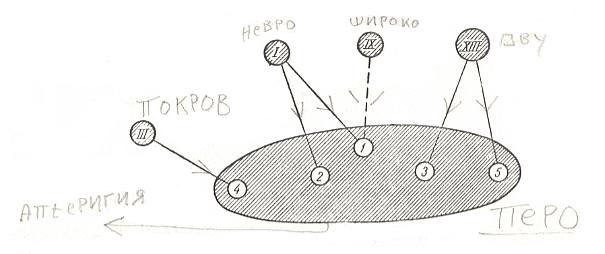
Figure 11 : Feather-wingedness. Interrelationships with other types, and structure of the type.
I - neuropterygia. III - elytropterygia. IX - platypterygia. I - dipterygia. Ptilopterygia can only lead to apterygia (winglessness).
(After ROHDENDORF, 1949, with some additions.)
Feather-wingedness may concisely be characterized as the working-out of a special form of flight-apparatus of small and minute insects, and with it as [being on] such an evolutionary path of transformations which may, with respect to their original forms (the sources), be called regressive.
e-mail :
 ( Please write in ' Subject ' entry : ' METAPHYSICS ', in order for me to be able to distinguish your mail from spam )
( Please write in ' Subject ' entry : ' METAPHYSICS ', in order for me to be able to distinguish your mail from spam )
To continue click HERE for further study of the types of flight-devices in insects, Part XIV, Dipterygia.
Back to first part of theoretic intermezzo
Back to second part of theoretic intermezzo Back to Part IX